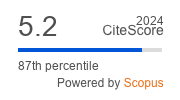Article | Open Access
Grasping Foreign and Security Policy Change: Patterns and Conditions of Change Among Liberal Democracies
| Views: | 2184 | | | Downloads: | 2645 |
Abstract: Russia’s invasion of Ukraine has been perceived as a fundamental shift at the international level, triggering reorientation in foreign and security policy, in particular among liberal democracies. At the same time, beyond such external shocks, states may incrementally adapt their positioning towards international affairs. To shed light on these dynamics, this article aims to quantitatively explore longer-term patterns of foreign and security policy in liberal democracies. In doing so, we make two contributions to the literature: First, we propose a quantitative operationalization of foreign and security policy change, combining military and non-military aspects, to explore the patterns of continuity and change over time (1988–2021), considering 20 liberal democracies. Second, we leverage insights from public policy analysis, in particular the punctuated equilibrium theory, to make sense of the identified patterns. Accordingly, we find support for the proposition that foreign and security policies typically change incrementally and that major change is rare. Moreover, while incremental shifts can be explained by domestic politics and institutional settings, major changes disrupt this pattern. In conclusion, the article discusses the plausibility of the quantitative analysis given the current policy shifts among democracies following Russia’s war in Ukraine.
Keywords: foreign policy; foreign policy change; liberal democracies; public policies analysis; punctuated equilibrium theory; security policy
Supplementary Files:
Published:
Issue:
Vol 12 (2024): From Kabul to Kyiv: The Crisis of Liberal Interventionism and the Return of War
© Florian Böller, Georg Wenzelburger. This is an open access article distributed under the terms of the Creative Commons Attribution 4.0 license (http://creativecommons.org/licenses/by/4.0), which permits any use, distribution, and reproduction of the work without further permission provided the original author(s) and source are credited.


